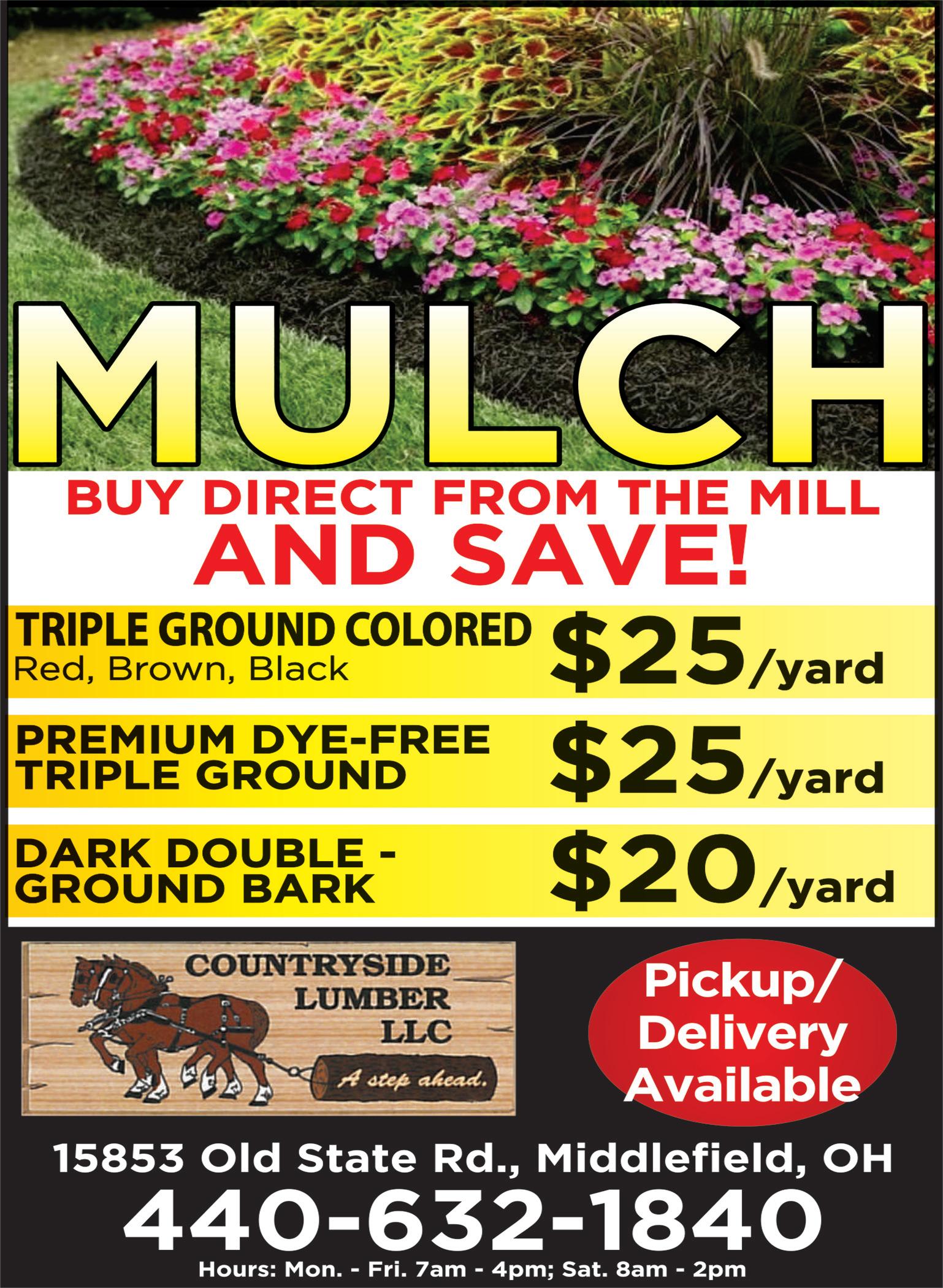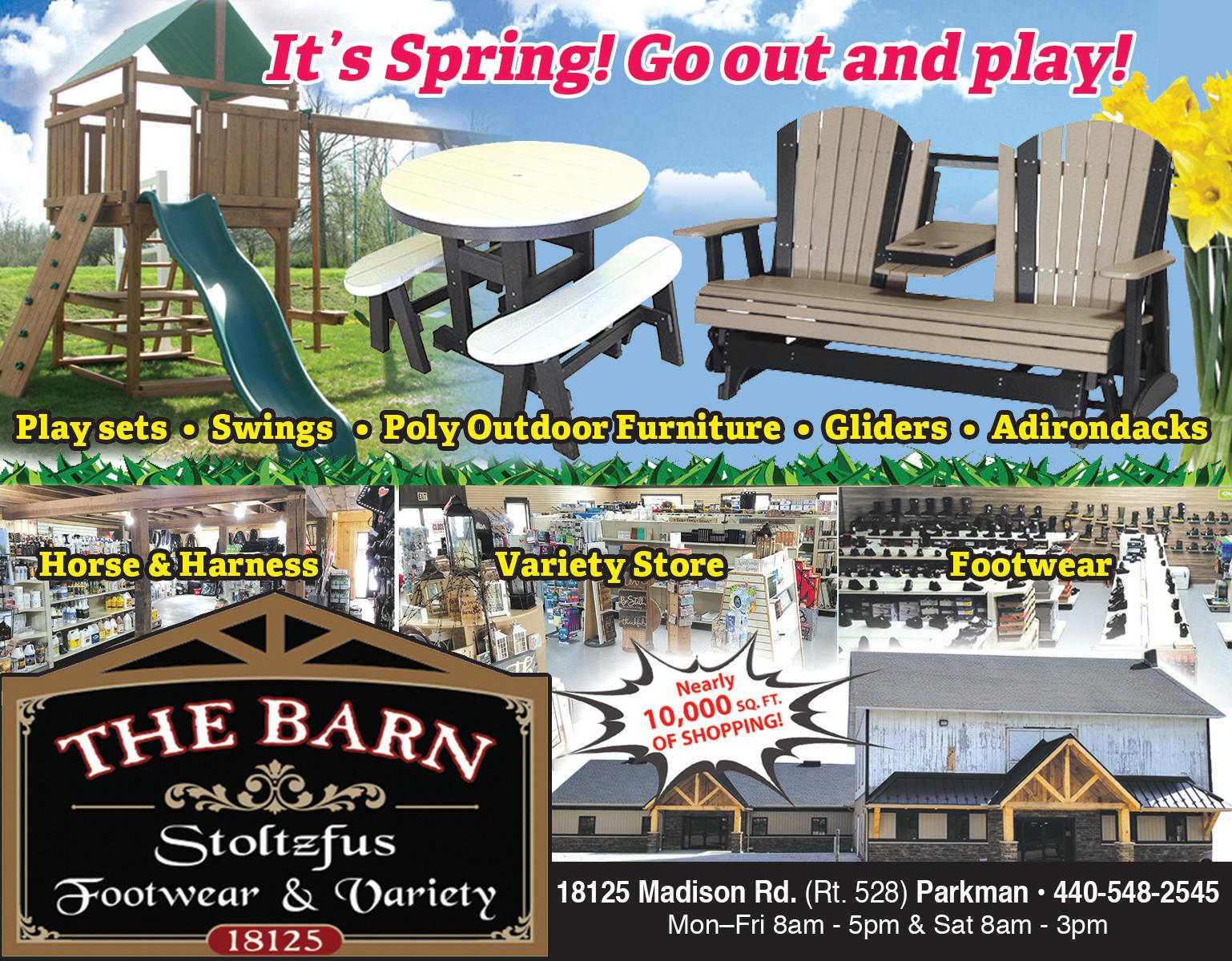
13 minute read
Deck out the interior. Use every stor
MetroCreative
Renovating a home to improve its value can be a smart investment. Interior improve- ments, such as updating kitchens and baths, offer good return on investment, but there are plenty of exterior renovations that can add value to a home and give it that coveted “wow” factor.

Landscaping
Abundant and well-planned landscaping can instantly boost curb appeal. According to the landscaping company Lawn Starter, 71 percent of prospective home buyers say a home’s curb appeal is an important factor in their buying decisions. As buyers use the in- ternet to look for their dream homes, there’s no denying a beautifully landscaped, nicely photographed property can entice buyers to click and read more about a house.
Address insects and minor repairs
Improving home value may come down to fixing areas of the home that can negatively affect its appeal to buyers. Hire an inspector to look at key components of the house and recommend what needs to be fixed. This way it is discovered before home buyers come in and do their own inspections. Termite infes- tations, deteriorating roofs and hidden water leaks are some things that might need fixing.

Improve the entryway
The front door is the focal point of a home’s exterior. Invest in a new door or paint METROCREATIVE There are plenty of exterior renovations that can add value to a home and give it that coveted “wow” factor.
it a striking color to add appeal. Remodeling magazine’s “Cost vs. Value Report 2019” in- dicates changing an entry door to a steel re- placement can offer 74.9 percent ROI. Such a door provides visual appeal and added securi- ty — things buyers look for. In addition to the front door, make sure that the entryway has a level walkway, steps that are in good repair, accents that are free from rust or tarnish, and decorative plants.
Outdoor lighting
Outdoor lighting can add to the ambiance of a property and serve as a security feature. Utilize different lights, such as a bright light by the entry, uplighting in trees and shrubs for drama, a light-lined path to the door to im- prove visibility, and motion-detection lights to improve the security of the property.
See Exteriors • Page 7
Cleveland summers are hot and humid, but your home can be nice and cool, unless your air conditioner breaks down.
To keep your cooling system running efficiently and effectively, yearly maintenance is a must.
Many homeowners are unaware when their cooling systems are running poorly and how much money is being wasted in the pro- cess. It not only costs more in energy bills, but also can cause further damage to the sys- tem that could necessitate costly repairs and even replacement of your air conditioner.
“I can honestly tell you that the question I hear most often is, ‘Do I really need yearly maintenance on my cooling system?’” said Ste- ven Smylie, president of Smylie One. “Since I was a little guy going to work with my dad on Saturdays, the importance of regular air conditioning maintenance has been imbed- ded into my soul. In fact, my father constantly would tell me, with a broad smirk across his face, that if it weren’t for the constant influx of repairs due to the lack of maintenance, he wouldn’t be able to pay the bills. I understood, from that moment on, the benefits of a properly tuned up and inspected cooling system, as well as the consequences of not having one.” All air conditioning manufacturers recom- mend annual inspections and maintenance be performed by a factory authorized com- pany. At Smylie One, technicians are NATE Certified and Smylie One is a Bryant Factory Authorized Dealer.
This means they are qualified to work on any and all systems that are installed and have the required number of staff that has passed NATE Certification testing.
These same manufacturers also have lan- guage in their warranties that say that any damage to their units due to improper or negligent maintenance is not covered under their warranty. So, if nothing else, please be aware of this stipulation. It does not neces- sarily mean the manufacturer will not honor a warranty or that your warranty will be voided if you neglect maintenance, but why risk it?
To ensure every inspection is completed thoroughly, Smylie One developed the Pro-Max Tune-Up & Safety Inspection. This is one of the most thorough inspections in the industry.
“We’re not in it for the short term. We want to do a very complete and comprehen- sive professional tune-up,” Smylie said. “When we finish, our client’s equipment is working as efficiently as possible as it did day one.”
For more information, visit www.smylie- one.com or call 440-449-HEAT (4328).


Exteriors from page 6
Repaint (or reside) the exterior
A fresh coat of paint or new (or cleaned) siding can instantly give homes a facelift. Neutral, warm and inviting colors tend to have the widest appeal. Adding manufactured stone veneer to the home can offer a 94.9 percent ROI, says Remodeling. And after doing the front door and siding, investing in a garage door replacement offers the high- est ROI of all exterior projects listed on the “Cost vs. Value Report 2019.” This improve- ment returns 97.5 percent when selling.


METROCREATIVE Homeowners concerned by the cost of remodeling a kitchen should know that there are ways to give kitchens a whole new feel without breaking the bank.


Affordable Features to Consider When Revamping Your Kitchen
MetroCreative
Kitchens are popular gathering spots in many homes. That popularity is reflected in various ways, including how many homeowners choose to remodel their kitchens.
A 2019 report from the home renovation and design resource Houzz found that kitchens were the most popular room to renovate in 2018. Homeowners considering kitchen remodels should know that the Houzz report also indicated that spending on kitchen remodels increased by 27 percent in 2018.
Homeowners concerned by the cost of remodeling a kitchen should know that there are ways to give kitchens a whole new feel without breaking the bank.
Appliances
Consumer Reports notes that luxury home buyers expect high-end features, including professional ranges and built-in refrigerators that match the surrounding cabinetry. However, many mainstream brands offer “faux pro” features that can equal more expensive alternatives. Consumer Reports even notes that many budget-friendly faux pro appliances outperformed their high-end counterparts in terms of reliability.
Countertops
Countertops tend to capture the eye’s attention when walking into a kitchen. OutSee Kitchen • Page 9

THINK SPRING!
QUALITY PRODUCTS, SERVICE & SUPPLIERS
DRIVEWAY STONE MULCH SEED/STRAW &FERTILIZER DRAINAGE GIFT CERTIFICATES 5 STEP FERTILIZATION PROGRAM • Seed & starter for damage repair • Pre-emergent for carb grass control • Spring weed & feed • Summer fertilizer with grub control • Fall fertilizer
Free Local Delivery With 3 Yard Minimum
Mapledale Farm INC. LANDSCAPE SUPPLIES
Monday - Friday 8:00 a.m. to 4:00 p.m. 9763 Old State Road • Chardon, Ohio 44024

SUBMITTED You can count on your local team from Jack Stankus Inc. for your heating and cooling needs. Call 440-543-5000 for more information.

Kitchen from page 8
dated and/or damaged countertops grab that attention for all the wrong reasons, while updated countertops made from today’s most popular materials provide that wow factor homeowners seek.
If granite is a must-have, Consumer Reports notes that homeowners can save substantial amounts of money by choosing granite from remnants at the stone yard. If marble is your ideal countertop, save money by choosing a domestic product as opposed to one imported from overseas.
Cabinets
Custom-built cabinets may be a dream, but they tend to be a very expensive one. Such cabinets are designed to adhere to the dimensions of the kitchen, and Consumer Reports notes that they can cost tens of thousands of dollars. If that estimate would bust your budget, examine the current layout of the existing cabinets. If the layout is fine but the cabinets need work, you can give them a whole new look by refinishing them. If the cabinets must go, stock units or semi-custom cabinets can provide a new look without busting the budget. Kitchen remodels can be expensive. But there are many affordable ways to revamp a kitchen.





Beautiful landscaping can add instant curb appeal to a property. But beauty isn’t the only thing that makes idyllic landscaping attractive to homeowners. Some landscaping features, such as shade trees, save homeown- ers money while adding aesthetic appeal.
The U.S. Department of Energy notes that shading is the most cost-effective way to reduce solar heat gain in a home. Shading also cuts air conditioning costs, which tend to be expensive in areas with warm, humid climates. In fact, the DOE notes that well-planned landscapes can re- duce unshaded homes’ air conditioning costs by anywhere from 15 to 50 percent.
When planting shade trees, one of the first decisions homeowners will need to make is which type of tree, deciduous or evergreen, they want to plant. Deciduous trees are those that seasonally shed their leaves, while evergreens are trees that keep their leaves throughout the year. Deciduous trees can help keep homes cool in the summer by blocking sun, and those same trees can be beneficial in winter after they shed their leaves by letting the sun in and keeping homes warm. But evergreens also can be beneficial in winter by blocking wind, potentially preventing cold air from making its way into a home through cracks in walls or around windows.
When planting shade trees, techniques vary depending on which type of tree home- owners ultimately choose to plant.
Planting deciduous trees
The DOE says that deciduous trees that are between six and eight feet tall when plant

METROCREATIVE When planting shade trees, techniques vary depending on which type of tree homeown- ers ultimately choose to plant.

ed will begin shading the windows of a home within a year of being planted. Depending on the species of the plant and the home, those same deciduous trees may begin shading the roof within five to 10 years of being planted. When planting deciduous trees, homeowners should keep these tips in mind.
• Plant trees to the south of the home. When planted to the south of the home, de- ciduous trees can screen between 70 and 90 percent of the summer sun while still allow- ing residents to feel summer breezes.
• Consider sun angles. Homeowners who want to shade their homes from low afternoon sun angles should plant trees with crowns that are lower to the ground on the west side of their homes.
• Cool air before it reaches your home. Shrubs and groundcover plants can be planted to cool air before it reaches a home.
See Trees • Page 11
Thursday, March 5, 2020 Geauga County Maple Leaf 7 Things to Consider When Buying a Shed
MetroCreative
Backyard sheds can be useful assets. Sheds can create storage space in the garage, basement or other areas of the house that have become gathering spots for gear typical- ly used outdoors. Sheds are ideal for housing mowers, tools and even pool-care equipment. But they can be put to other uses as well, such as being key spots to engage in hobbies or even as a child’s clubhouse.
Various factors should be considered be- fore building or buying a shed. A storage shed can be a significant investment. Once placed, sheds may remain in their dedicated spots for years to come. That means careful thought should go into the planning process.
1. Check your local building codes first. Before you accumulate building materials or order a shed, be sure to know the ins and outs of shed codes. The codes may im- pact the shed’s placement, construction, the materials used, size, and numerous other factors. It’s much easier to amend plans be- forehand than to face the hassle and expense after learning you did things incorrectly.
2. Choose placement wisely. Spend sev- eral days assessing the yard and thinking about the uses for the shed. If you plan to store pool floats and chemicals inside of the shed, it should be located close enough to the pool to be convenient. Look at the lay of the land. If there is a soggy patch of land that can turn swampy under the shed’s foun- dation, that is a poor location choice. If you need access to electricity, placing it far away from the house could necessitate running expensive wiring.
3. Consider the design. Just because a shed is for storage doesn’t mean aesthetics should be overlooked. Choose a shed style that complements your home. You may also want to match certain architectural features, like arched doorways or dormers. Design also may relate to practicality. For instance, storing a riding mower inside may necessi- tate dual doors that open widely.
4. Invest in quality materials. Spending a little more and using quality materials can ensure it lasts long enough to be cost-effec- tive. The right materials will be resistant to splitting, cracking, decay, and insect damage. 5. Prepare the site well. A proper foun- dation for the shed is almost as important as the shed itself. You cannot just drop the shed on the lawn and leave it, as the shed can sink or structural issues may arise if it is placed on a weak base.
6. Blend into the environment. Surround the shed with shrubs or plants so that it blends into the yard and complements the space.
7. Deck out the interior. Use every storage tool at your disposal to maximize floor, wall and even rafter space for storage. Plan where items will be kept and customize the storage options around those locations.


Trees from page 10
Evergreen trees
Planting evergreens to block wind is known as “windbreaking,” which lowers the wind chill near a home. Wind also can be used to cool a home in summer. But these benefits can only be realized when evergreens are strategically planted.
• Location, location, location: The DOE advises planting evergreen trees to the north and northwest of the home to stop wind. In addition, to get the most bang for your wind- breaking buck, the distance between the home and windbreak should be two to five times the height of the mature tree.
• Plant trees on either side of the house. Planting trees on either side of the house will direct cooling winds toward the home in the summer.
Shade trees can help homeowners reduce their energy bills, making them valuable and attractive additions to any landscape.






